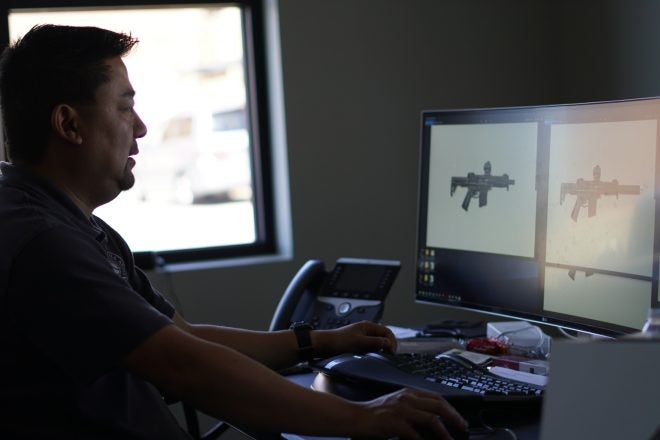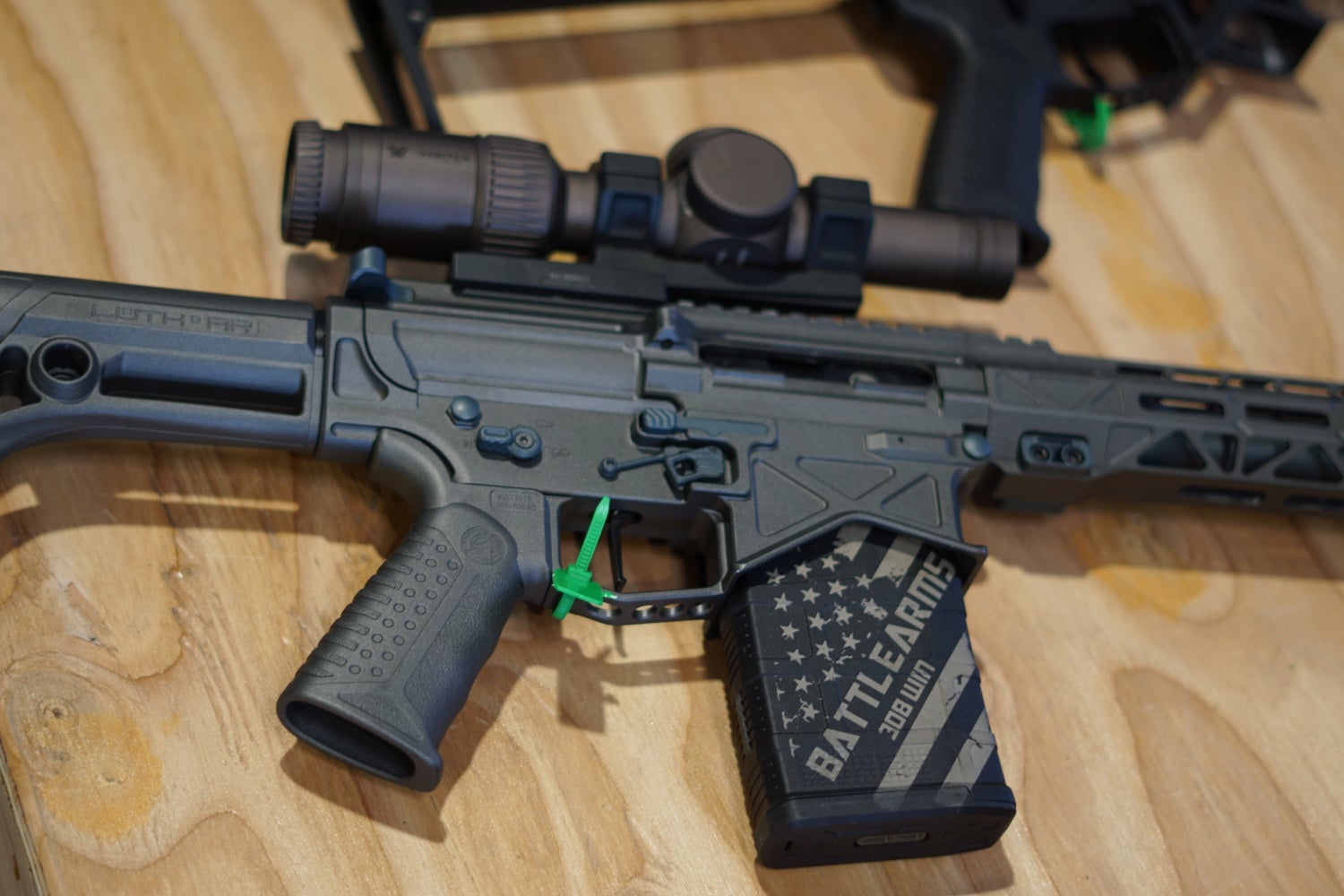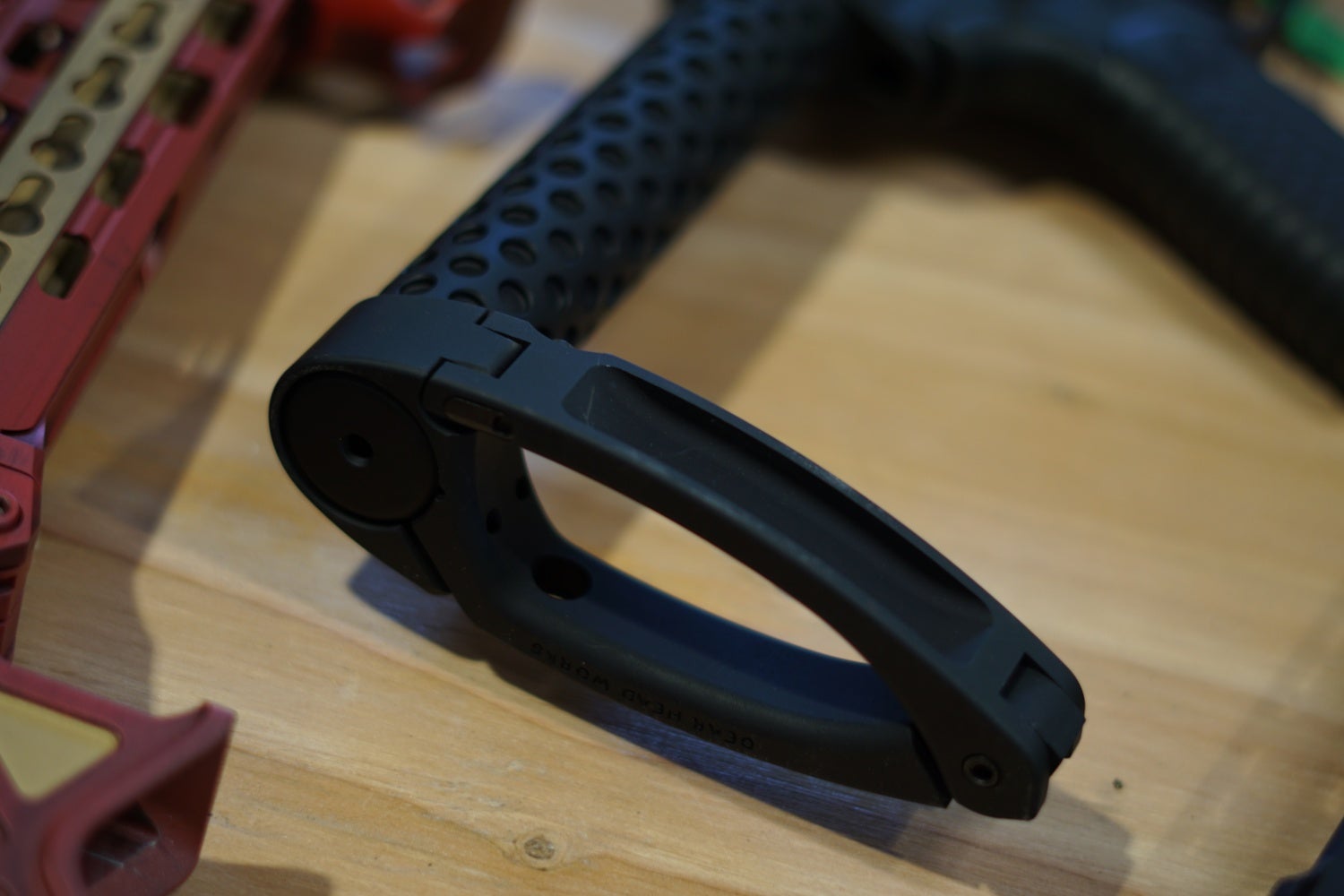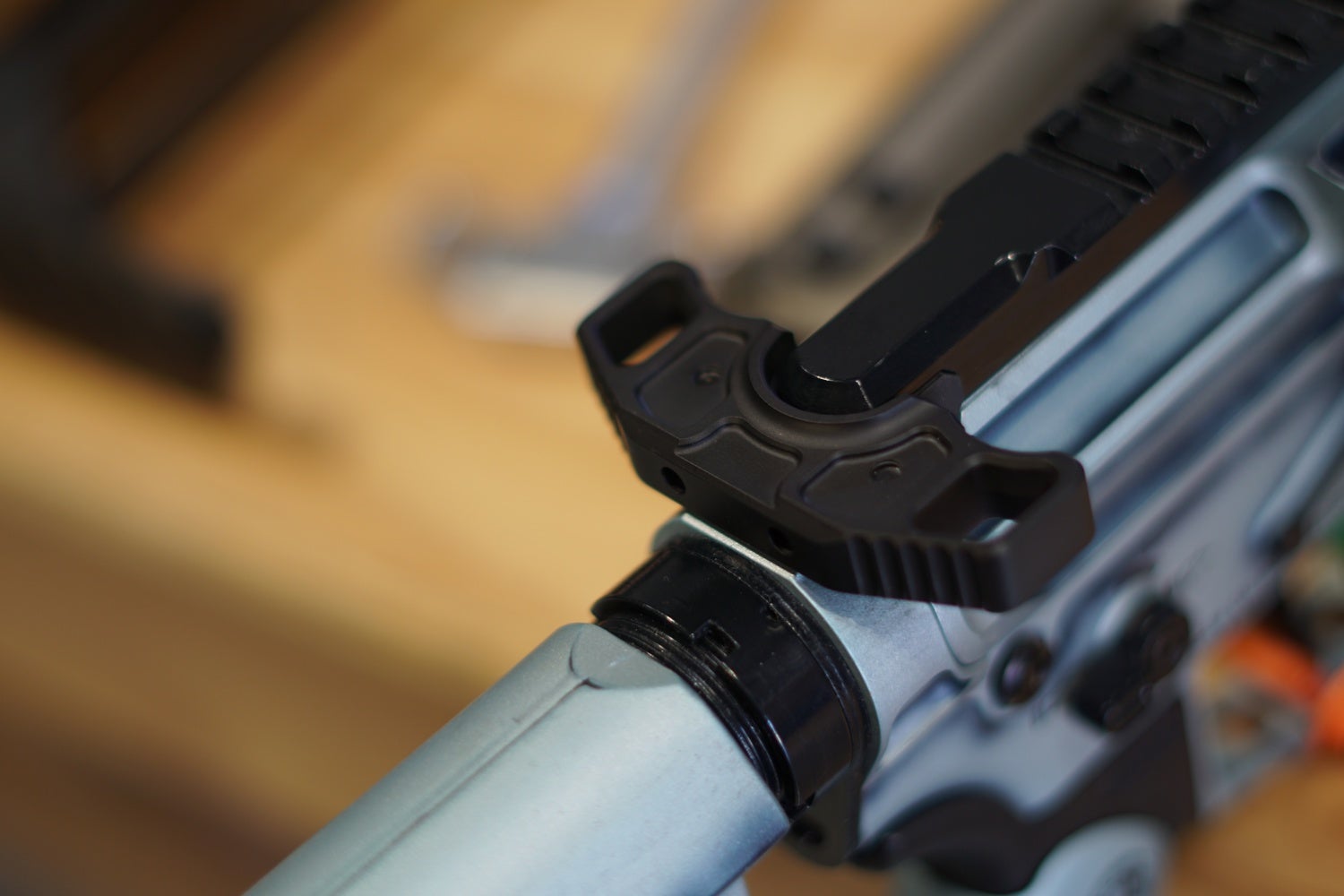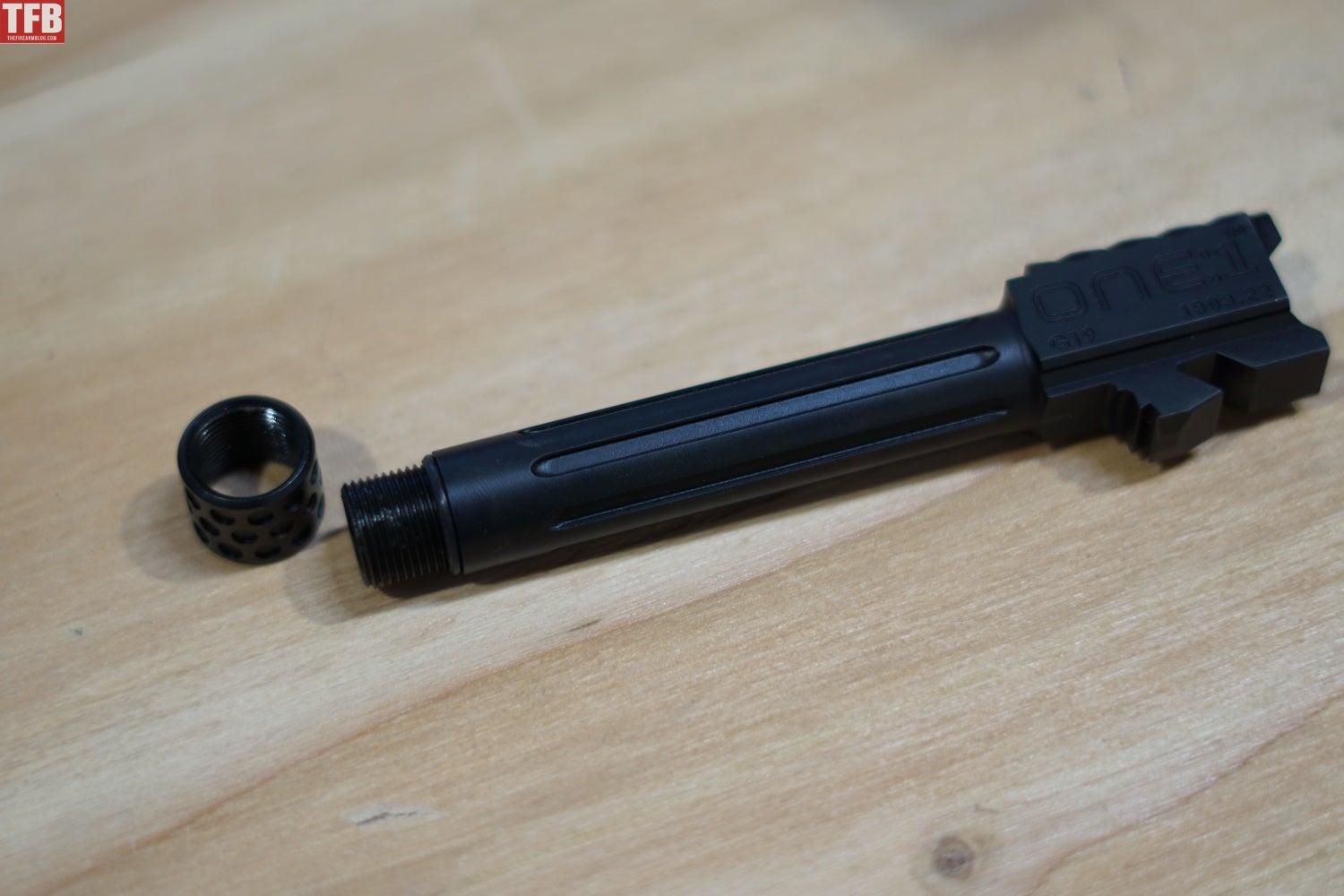In Part One of this series George Huang discussed the initial founding of the company and why the Battle Arms Development team excels at problem-solving. In this section, he talks to TFB about why the company wears lab coats at SHOT Show, duel meanings behind the company crest, and the latest products and developments.
The Firearm Blog: You mentioned the Remington Defense cooperation earlier, are there any DOD programs that the company is actively pursuing or has in past apart from the M4 Upgrade Program?
George Huang: Yes, due to some of our lightweight projects there have been a few things we’ve been working on, particularly with the Air Force. We can’t talk about it too much, but it is mostly us selling components to companies that are competing in such programs so we are essentially one step removed from that process. But it is mostly due to our lightweight and extremely compact stock assemblies that allowed us to go down that road. I would say it isn’t really a large priority for us right now.
TFB: Okay, this is the most important question of the interview, why do you guys wear lab coats at SHOT Show every year?
GH: Right! So that comes from the decision for us to stand out for our beliefs and design philosophy. When we first set up a booth at SHOT Show, we had a 10 by 10 booth. I’d been to SHOT Show before, and it’s a sea of firearms right. Upstairs, downstairs, around the corner, you see a million things, its sensory overload. And I was thinking that first year at SHOT after being on the waitlist for some years, how do we get noticed? So many companies have their SoF guys talking about their combat or military experience, etc… I’m not that guy, I’m not gonna even pretend to be that guy. I’m the engineer, I’m the designer, I’m that “Q” character in James Bond thinking up all these crazy solutions to help the trigger pullers, for the special agents, for the operators. I’m not the operator. I’m not going to sit there with the 5.11 pants and tactical pullovers, pretending something I’m not. So what is true to myself? Well, I can wear my lab coat, we’re engineers, designers. Again, it comes back to the theme and storytelling, without even saying anything. That comes from my background in theme parks and casinos. I’m trying to convey a story to you before I even open my mouth to say a word. I give you my business card, it’s telling you something about us, you come to my booth, you see what I wear, you already judge me before I’ve even started a conversation. Without even saying anything, I’m already communicating with our potential customers. In a sea of black, guess what stands out? White. I can guarantee you, no one else is going to be in a lab coat at SHOT Show. Even giving directions, “Just find the guys with the lab coats on, you can’t miss them”. That is what I want. Not, “Yeah, go find the guy with the black Polo, 5.11 cargos…”, now you’re going to be at every booth! Another point is who do you want building your guns? I mean, let’s say you’re a race car driver, who do you want working on that car? Do you want another race car driver to work on that car? Or that mechanic? You want that engineer to design that engine or transmission or do you want your race car buddy behind a CAD program? He can drive fast yes, but can he turn that monkey wrench? So do you want the nerds with the clipboards and glasses making your rifles or you want that operator, to essentially look the part? I’m not saying they can’t be as good as a designer, but that’s not me.
TFB: At the end of the day, the input isn’t going to build a rifle alone.
GH: Of course, input is invaluable for designing anything, from every aspect. Even from an average Joe, even from the point of view of a woman shooter. Just because she doesn’t have five or ten years in the military doesn’t mean that her input has no value to us. I want to sell to the female market, so I have to take that into consideration. Maybe that little bit of weight difference means your wife or girlfriend not enjoying going shooting with you on the weekends. I take away the “it hurts”, the “its heavy” and now its enjoyable.
TFB: Second most important question, your company crest has a lot going on with it, can you explain it?
GH: Absolutely. So everything in the crest has a dual meaning. Starting with the Spartan warrior. Obviously they are known for their military might and skill set, because it is appropriate for what we are trying to achieve with our firearms. But I grew up in a town called Sparta, New Jersey, went to Sparta High School, and our mascot was a Spartan. That to me represents home. Another point is that I want to create jobs in the U.S. , nothing is going to be shipped overseas for work, so this is the U.S. flag, stands for American made. But it is also a shooting star if you look at it from another angle. The circle is the Spartan shield, but it is also the lands and grooves of rifling. Another angle is that these are gears, like with machinery. The plume on the helmet is where our title is, and on the reverse side it doesn’t have the title for when we have to etch the crest into really small parts because the text can’t be scaled down. Going into all this detail is tangential to the amount of detail we put in every product we have. There are a lot of ways I can cut corners where our customers would never know the difference, I could easily save money. But I don’t, because I know the difference, I didn’t do that right. I want to build a brand where people can trust. Sure, we make mistakes, but you know what, we try our best to own up to them. One small example is that we used wire EDM for our magazine wells whereas others use broaching. We use a fresh wire with an electronic discharge flowing through it so the wire technically never touches the metal. The electricity breaks the bound. But it takes so long, something like 30 minutes to cut one hole, versus several minutes on a broach which is essentially one long file that is being pushed through. But imagine any file, as you push it through, it gets smaller and the file gets worn out. Your first hole might be perfect but after a thousand receivers it gets smaller and smaller.
TFB: What is the breakdown of sales within the company?
GH: Well, we really are a parts company that just started getting into rifles. We don’t have our own standard model of a rifle because I’m a perfectionist, I don’t want to make a standard model and then change parts. As it stands, we’re right at around 10 percent rifles, 90 percent parts. Those rifles being mostly custom but we are getting some standardization going.
TFB: Are there any big projects that are coming up that you want to shed some light on here?
GH: Yes, so we came out with our .308 rifles that we debuted at NRA 2018, already have a number of preorders on them. We have our dedicated 9mm lower receiver as a pistol caliber carbine. We also have our ambidextrous charging handle which a number of people saw at SHOT 2018 this year. Getting more standardized models of our Tanker and Paratrooper models as well. With that, we are looking at pistol configurations. SBR is great, but many people don’t want to go through that NFA headache so we decided on a pistol Tanker. Gearhead Works is doing the brace for us with their Tail Hook. In the future, I will say that we will try to bring to market a side charger for the AR15 platform. I can’t talk too much about it but I will say it will be different than any other side charger on the market right now. It is Patent Pending right now. We’re going to try like hell to get it out by SHOT 2019, but no guarantees. We also have our Glock 9x19mm barrel, in addition, we’re looking at a possible 9x19mm handgun. I’m excited about the barrel because we’re using a single point cut rifling technique. Much more used on rifles, it’s very rare on a handgun because it is time-consuming, using the same cutter to cut every groove. Button rifling you push a cutter through the barrel blank at the same time and it might not be the same for every groove.
Stay tuned for the TFB TV episode coming up where we shoot the Paratrooper and Tanker SBRs on Full Auto! Much thanks to the Battle Arms Development team for allowing TFB to spend time with them at their facility and on the range.
 Your Privacy Choices
Your Privacy Choices
